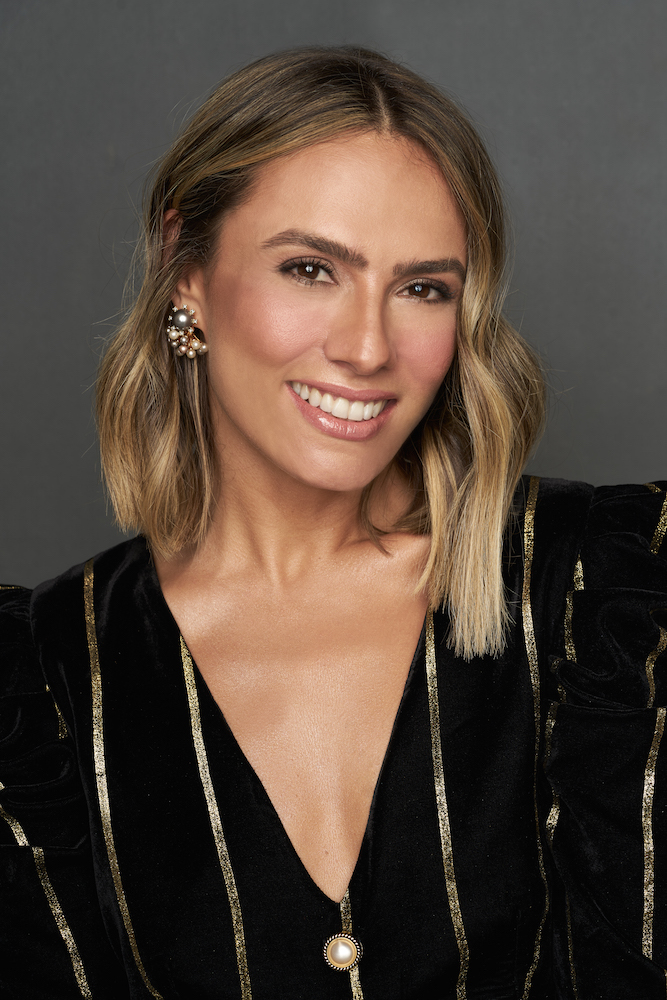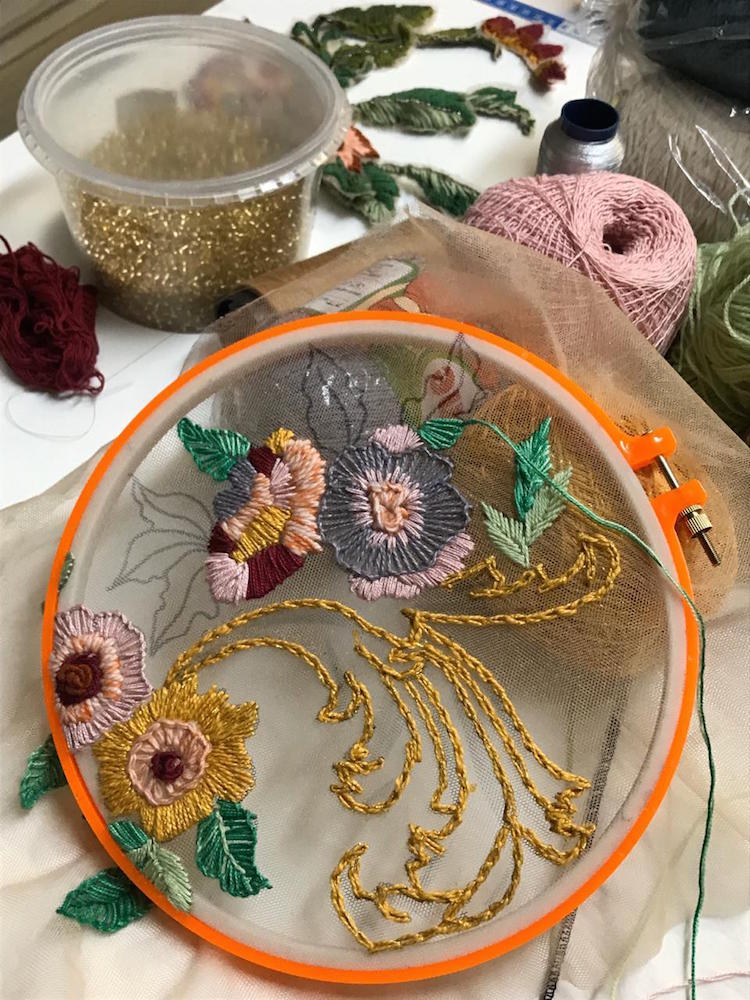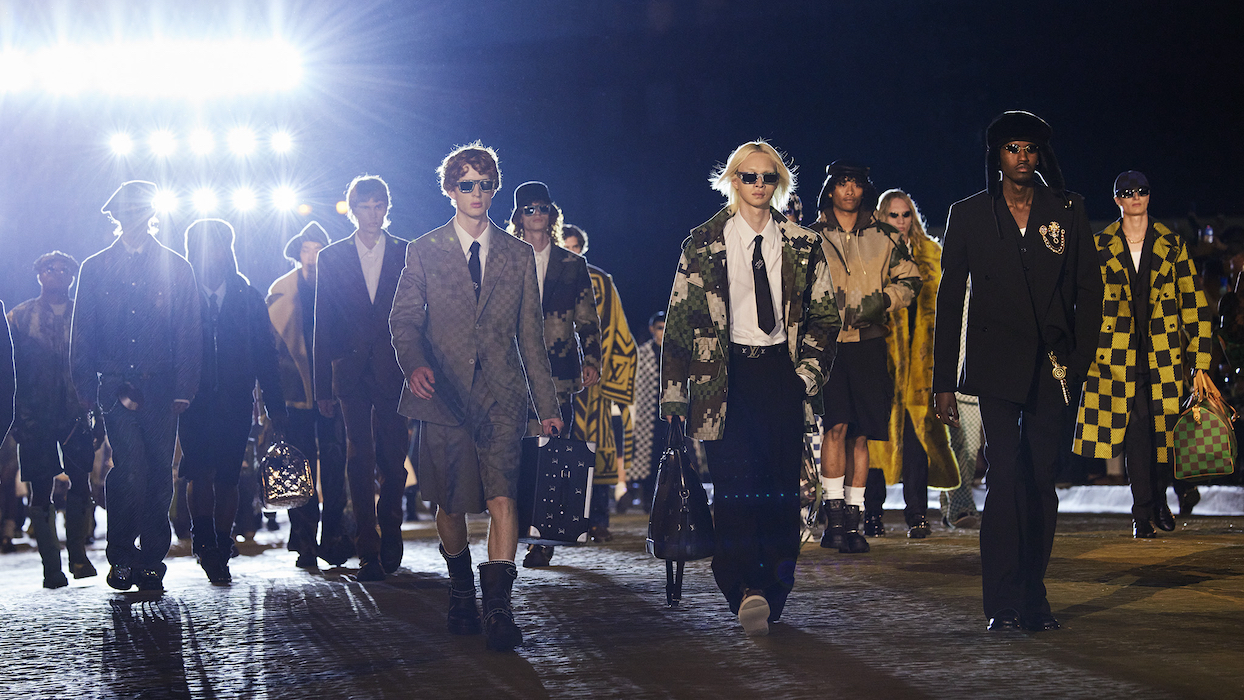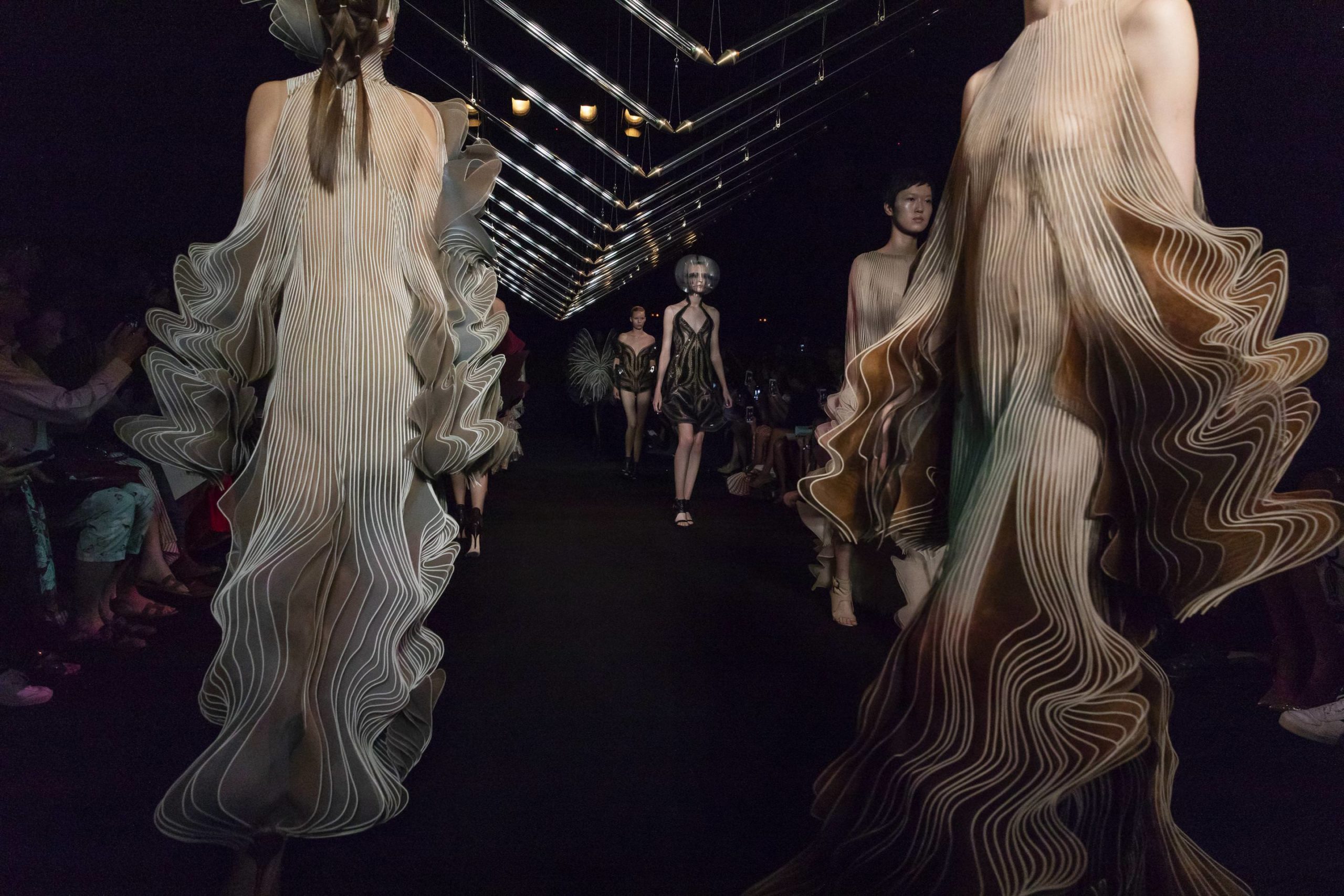The fashion designer Patricia Bonaldi’s label PatBo is a whimsical tale of how fashion, community, and craft come together. Her upbringing in Brazil impacted the many viewpoints her business is dedicated to—from tropical inspiration to uplifting the people who create the label’s work.
Ready-to-wear clothing, swim garments, and accessories are all hand-stitched in Bonaldi’s hometown of Uberlândia, where she established a school that teaches its locals the art of embroidery. Today, more than 500 people within the community are employed here. Between this town and Bonaldi’s atelier in São Paulo, PatBo produces garments for over 150 stores in 15 countries.
This season for its Fall/Winter 2020 collection, PatBO is transforming the woman’s everyday moments and experiences with a full ready-to-wear offering. The brand’s staple cut-out dress is seen in a variety of colors, fabrics, and textures, complemented by structured separates, hand-beaded styles, and more.
Whitewall spoke with Bonaldi to learn more about her intimate relationship with Brazil, fashion, and art, and why uplifting community is a priority at PatBo.

Portrait of Patricia Bonaldi courtesy of PatBo.
WHITEWALL: How did your early years in Brazil impact your decision to become a fashion designer?
PATRICIA BONALDI: I was born in a small town in the countryside of Brazil and grew up in Uberlândia. While studying law, I pursued my passion for design and opened Patricia Bonaldi, a namesake multi-brand store. Soon after the store opened, I began receiving requests to design custom gowns which quickly turned into an eveningwear collection. This cemented my future as a designer. I opened several stores in Brazil and was the first Brazilian designer to be carried in Harrods. In 2001, combining my design heritage with creative freedom in a more contemporary way, my bolder ideas began to take shape and PatBO was born.
WW: How would you describe your label as it is today?
PB: PatBO captures the vibrant energy of South America through its artfully hand-embroidered ready-to-wear and swim collections. From the beginning, meticulous craftsmanship and bold prints have been a part of the brand DNA. Today, PatBO is sold in 15 different countries and available in more than 150 stores globally including Moda Operandi, Net-a-Porter, FWRD, Intermix, and Saks Fifth Avenue.

PatBo’s Fall/Winter 2020 collection, photo by Lisa Richov, courtesy of PatBo.
WW: You established a school that teaches locals the art of embroidery in Uberlândia. Today, more than 500 locals are empowered by these skills and are able to support their families. How does this impact the community and craft found in the city?
PB: For many years we have been teaching traditional embroidery and handmade techniques in Uberlândia. By empowering these people, we are valuing our culture and talent and preventing this labor, which is so important, from becoming scarce. I believe that if we don’t keep this expertise alive, we may not have it in the not too distant future. The objective is to teach and professionalize women of different technical ages of artisanal manufacture and preserve this knowledge that is so valuable.
WW: Do you still spend time between the school in Uberlândia and your atelier in São Paulo?
PB: I spend most of my time between Uberlândia, where my factory and school are located, and São Paulo where I have an atelier. I am present throughout the development of each collection; I fit every sample, I approve all embroidery tests, and oversee the stamping process to make sure every piece is perfect.

Courtesy of PatBo.
WW: The brand focuses on sustainability, and has a dedication to preserving the art of craftsmanship. Tell us a bit about this.
PB: The type of detailed embroidery I do is not something easily found in Brazil, so it was important for me to preserve this artisanship. I began to teach this technique 12 years ago to women from my hometown. Today the school employs over 500 local artisans, providing them with a specific skill set and the tools to support their families.
WW: Transparency is becoming increasingly more important for consumers. What is the label doing to make responsible choices and be more sustainable?
PB: Within the company, we have adopted policies that help to minimize environmental impacts, such as the replacement of paper packaging with Eco bags, produced in our own company using reuse of fabric. We have eliminated the use of plastic cups, replacing them with mugs that can be reused. The brand has increasingly looked at our surroundings and associated with institutions and organizations to revert part of the sale of capsule collections to people in situations of vulnerability.
WW: What actions do you personally take to be more sustainable in your daily life?
PB: I am very attached to nature, and I have a personal responsibility to preserve and care for it as much as possible. First of all, I believe that the act of being sustainable starts in the way in which you act and relate to the people around you. One of the company’s values is respect for people and processes. Day-to-day practices have already become routine for me: I use eco-bags produced in the company on a daily basis, I have adopted the total replacement, eliminating the use of the plastic bag. In my diet, I give preference to organic, non-industrialized, and as natural as possible food.

PatBo’s Fall/Winter 2020 collection, photo by Lisa Richov, courtesy of PatBo.
WW: Tell us a bit about your personal style.
PB: I like to have creative freedom when it comes to dressing. On a daily basis, I am a more practical person. I value comfort and mobility. I am passionate about prints and embroidery and I believe they are the essential elements for a unique piece and that tell the story of people’s hands, dedication, and care.
WW: Tell us a bit about your relationship with art.
PB: Art is part of my life—in my work and creations. I believe that many of the most important stories are told through the purest art of drawings, paintings, and poetry.
WW: What are you working on next?
PB: Right now, my focus is on keeping my employees safe and healthy while continuing to support the local artisans who are the foundation of my business.









